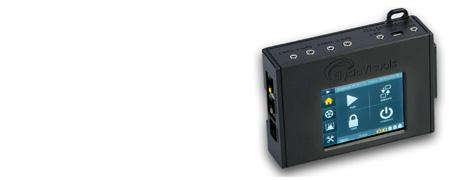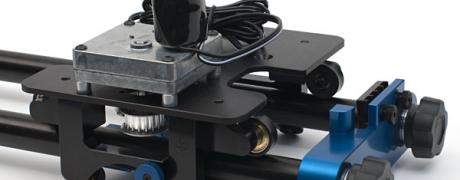Examples of settings for sunsets and sunrises
Note: The settings as described on this page are ONLY required when you use the RamperPro in expert mode and when you decide not to use the automatic light sensor setup and the automatic exposure control. Firmware 3060 and higher will automatically default these settings for you. This manual page is only here for historical reasons.
It was mentioned earlier in this manual that sunrises are a bit more difficult to achieve compared to sunsets. The reason is that you have a high risk of over exposing your images. The RamperPro can prevent that when you properly set the correct parameters for astronomical and civil sunrise times. It is therefore more important to properly setup your parameters when you want to start a sunrise shoot. Sunsets are easier to achieve because then the light sensor and histogram mode of the RamperPro combined with the factory default settings will give you very good results out-of-the-box.
This manual page describes some settings that are being used by many RamperPro users for both sunsets and sunrises. Note that it is still very important to setup the proper values for the sunrise and sunset times as described here: Setup for surises and sunsets
Basic settings for sunsets
| Setting | Value | |
| Light sensor "Sensor Gain" | 0.7 | The sensor gain determines how fast the RamperPro will respond to the light sensor measurements. A smaller gain will lead to faster ramping. You don't need to push ramping during a sunset because light is decreasing and the histogram analysis will prevent over exposure. |
| Light sensor "Minimum time per stop" | 00:05:00 | This value tells the ramper pro how fast it can ramp. Don't set it too a very low value during a sunset otherwise your images tend to get a bit too bright the first 30 minutes after sunset. The exact value depends a bit on your location and time of the year. But a value of around 4:30 to 5:00 minutes is a good starting point. Note: This parameter will be removed in a future firmware and it will be replaced by an automatic algorithm. |
| Histogram mode "Right clipping" | 1 | A value of 1 means that only the far most right part of the histogram is evaluated to see if the images are over exposing. |
| Histogram mode "Right cut off" | 6 | Over exposure is only detected when the histogram is really as far to the right as possible. |
| Use positive EV correction | YES | This ensures smaller steps when the RamperPro switches the shutter speed on your camera during a sunset. This limits flickering. |
Basic settings for sunrises
| Setting | Value | ||
| Light sensor "Sensor Gain" | 0.60 | The sensor gain determines how fast the RamperPro will respond to the light sensor measurements. You need to RamperPro to ramp as fast as possible during a sunrise because your images will over expose when the RamperPro cannot keep up with the growing amount of light suring runsise. It is important to us a smaller sensor gain to enforce fast ramping during sun | |
| Light sensor "Minimum time per stop" | 00:01:00 | The minimum time per stop value blocks the ramping speed of the RamperPro as soon as the measured speed (by the light sensor) has the value of minimum time per stop. But light can change very fast expecially at sunrise moment when the sun breaks through. A value of around 2 to 1.5 minutes will ensure that the RamperPro can ramp fast enough to keep up with these changing conditions. | |
| Histogram mode "Right clipping" | 5 | You risk over exposure during sunrises. A value 5 means that over exposure is detected earlier by the RamperPro. | |
| Histogram mode "Right cut off" | 1 | Over exposure is only detected very early when the histogram tends to get to far to the right. | |
| Use positive EV correction | No | This ensures smaller steps when the RamperPro switches the shutter speed on your camera during a sunrise. This limits flickering. |


